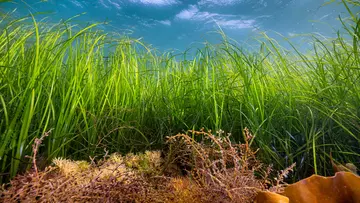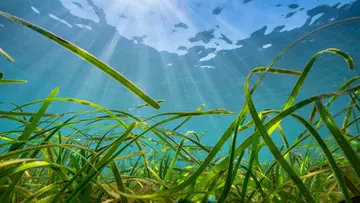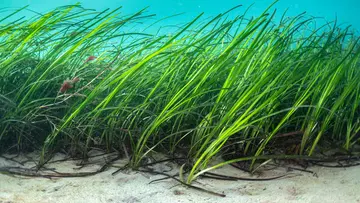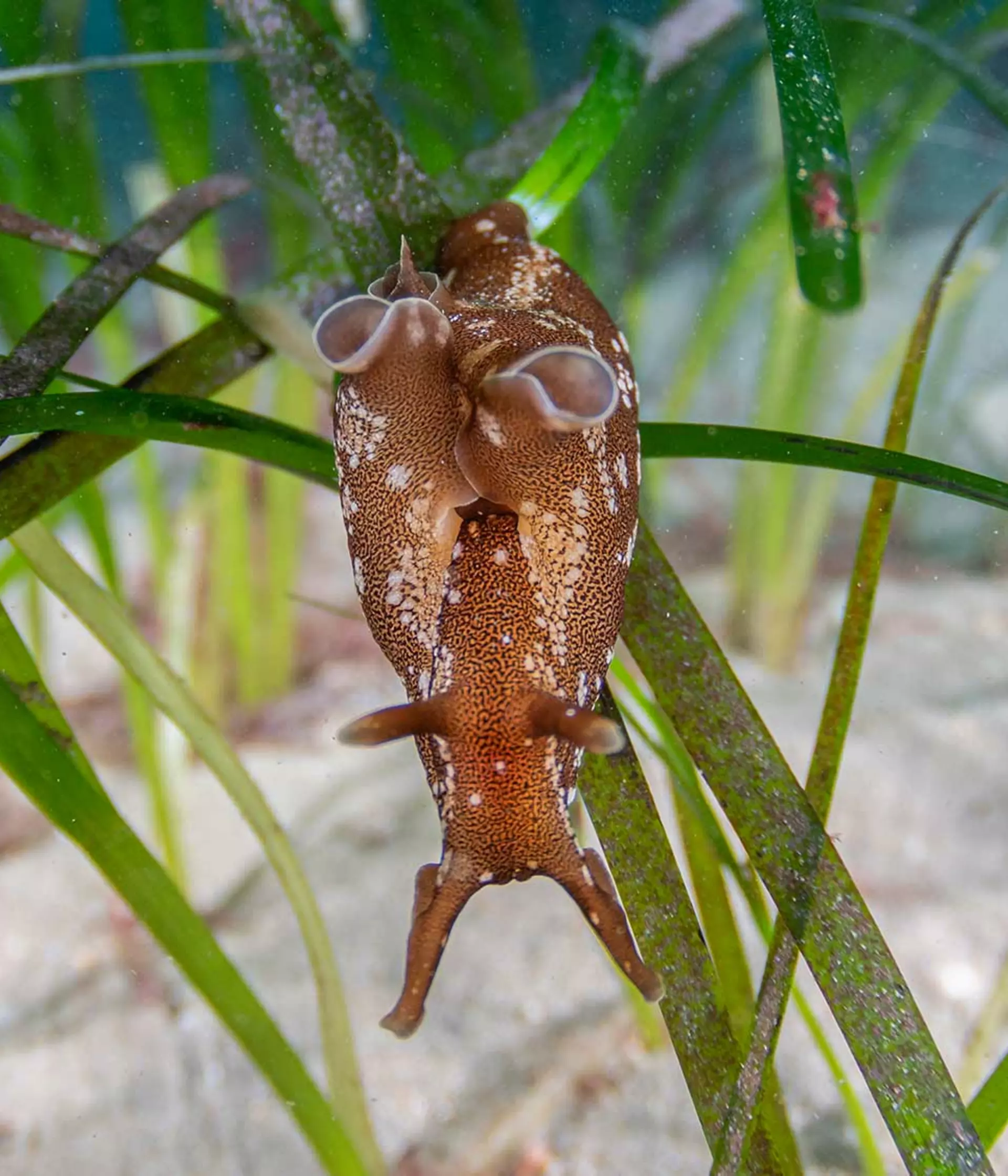
ZSL
Zoological Society of London
Experts from ZSL and the University of Portsmouth turn science into a practical toolkit on how to restore seagrass habitat, which can tackle climate change and biodiversity loss.
A pioneering toolkit for restoring vital seagrass beds in the UK and Ireland has been created by conservation scientists; providing a practical guide for anyone wanting to help re-establish the natural ‘blue-carbon’ habitats around the coast.
Launched today, the Seagrass Restoration Handbook, commissioned by the Environment Agency, is the first-of-its-kind in England, and is an official output of the UN Decade of Restoration.
Download the seagrass restoration handbook
ZSL and University of Portsmouth led an international team of seagrass experts to create a ‘how to’ handbook full of practical guidance for local authorities, community partnerships, charities and environmental organisations who want to actively restore seagrass beds. Seagrass – the world’s only underwater flowering plant – is not only vital for biodiversity, but also a blue carbon store (habitats that can absorb carbon dioxide), helping to tackle climate change. As world leaders discuss the future of our planet at COP26, the launch of a practical guide to implement nature-based solution such as this, is timely.

Seagrass has been lost extensively across UK waters during the last 100 years, with recent research estimating that at least 44% of the UK’s seagrass has disappeared since 1936, with 39% of this happening in the last 30 years.
Often called an ‘ecosystem engineer’, seagrasses create a habitat for fish and other aquatic wildlife, connect different natural spaces, provide ecological services such as storing carbon and nitrogen, and improve water quality.
Over the past five years, several scientific teams, notably from Project Seagrass, Swansea University and the Ocean Conservation Trust, have pioneered restoration efforts. The University of Portsmouth is currently doing further research into the connectivity between aquatic habitats, and ZSL Wetland Restoration Programme plans to apply the tool kit in the Greater Thames Estuary where over 300 hectares of seagrass has been lost.
ZSL Restoration Project Manager, Celine Gamble said: “Seagrass beds are like the forests of the ocean, but because they’re out of sight they tend to be overlooked – despite being critical mitigators of climate change and coastal protection, as well as home to hundreds of marine species.
“Our hope is that councils, environmental, and community groups across the UK and Ireland will use this guide to establish lost seagrass beds in their area, helping to mitigate climate change, flood risks and providing homes for 100’s of different marine species.”

By sharing scientific knowledge and research, this handbook will support groups to start a restoration project of their own. From providing advice on finding a suitable site, distributing seagrass seeds, biosecurity measures, and obtaining a licence.
Dr Joanne Preston of the Institute of Marine Sciences at University of Portsmouth said: “Now is the time for action; we can’t delay any longer the restoration of marine ecosystems on which humans depend, yet have largely destroyed. I hope this handbook will inspire and equip groups around the UK and beyond to get involved in restoring seagrass ecosystem and the wonderful biodiversity associated with them.”
Tony Juniper, CBE and Chair of Natural England said: “Seagrass beds hold significant quantities of carbon that would otherwise be in the atmosphere. They also help mitigate the impact of more extreme weather and sea-level rise while improving water quality and stabilising the seabed. In addition, lush, dense seagrass beds full of life show us what a healthy sea should look like and inspire us to protect our oceans.
“Although many of our seagrass beds are now within Marine Protected Areas, it is important to increase our ambition and add restoration to protection efforts.”

This Seagrass Restoration handbook is one in a series of guidelines commissioned by the Environment Agency, including restoration of saltmarsh and native oyster habitats. The Native Oyster Restoration Handbook is part of a project led by ZSL and University of Portsmouth, and aims to support communities and local councils in creating native oyster restoration projects of their own. Earning themselves the title ‘ocean superheroes’, native oysters (Ostrea edulis) provide huge benefits to coastal waters by helping to clean our seas and acting as an important habitat for marine wildlife.
ZSL is urging world governments and policy makers to put nature at the heart of all decision making to truly tackle the global threats of climate change and biodiversity loss, and will be calling on leaders to make this commitment at COP26.
